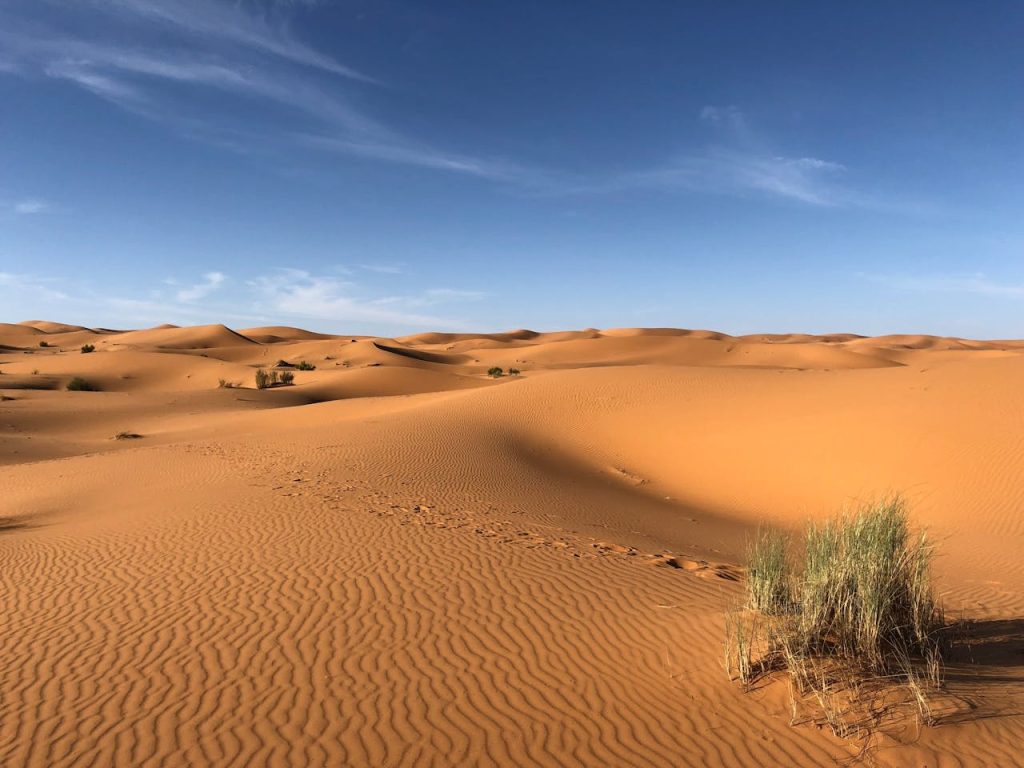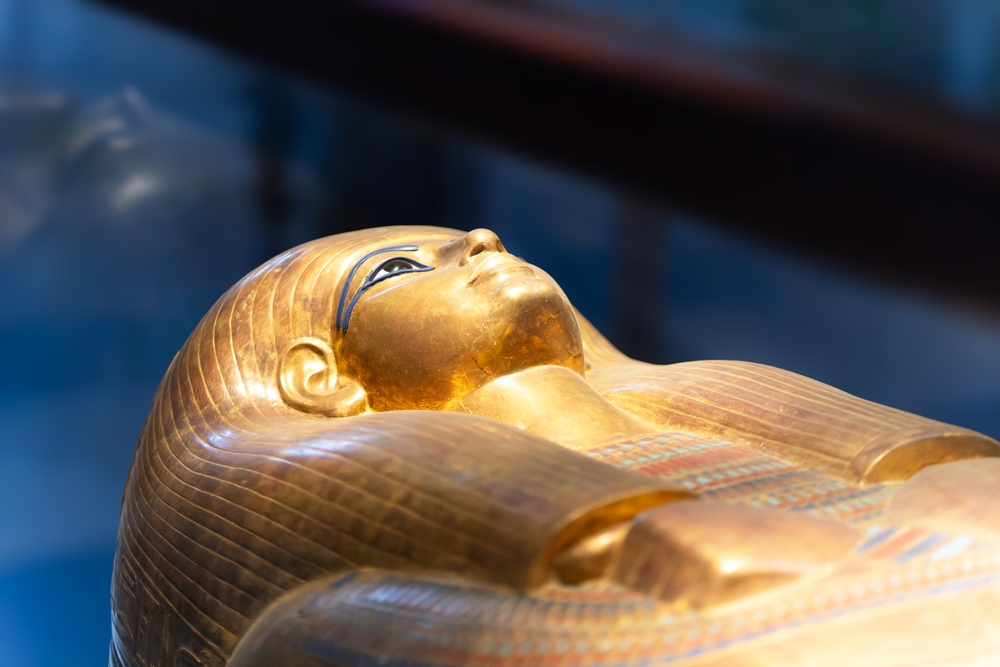Your cart is currently empty!
Ancient Sahara Mummies Reveal a Lost Lineage Unlike Modern Humans

The Sahara has always carried an air of mystery. Its rolling dunes and endless horizons conceal histories that most of us can barely imagine, stories of people and cultures who thrived long before the land turned into the vast desert we see today. Now, two 7,000-year-old mummies discovered in the Takarkori rock shelter in southwestern Libya are pushing scientists to reconsider what they thought they knew about human prehistory. When geneticists extracted DNA from these remains, the results did not align with expectations. Rather than belonging to lineages associated with modern sub-Saharan African groups, the DNA revealed a much older, divergent North African ancestry that does not cleanly map onto today’s populations. This startling discovery offers a glimpse into a branch of humanity that lived in relative isolation, carrying a genetic legacy that has largely vanished from our modern world. It highlights the gaps in our understanding of Africa’s prehistoric past and reminds us that human ancestry is anything but straightforward.
The significance of these findings goes far beyond genetics alone. For decades, much of our narrative about humanity has been shaped around migration, integration, and the constant flow of people across landscapes. This framework emphasizes the blending of populations and the spread of cultures, tools, and languages as communities interacted. Yet, the Takarkori mummies challenge that neat picture. They suggest that in some cases, isolation, environmental barriers, and cultural boundaries preserved populations in ways we rarely consider. These women lived in a Sahara that was lush and green during the African Humid Period, a time when lakes and grasslands spread across what is now desert. They represent not just lost genetic threads, but a reminder that history unfolds in multiple directions at once, with some stories fading while others survive. The discovery forces us to reflect not only on the science of human ancestry but on what it means to search for roots in a world where the past is often far stranger than the categories we use to describe it.

The mystery in the Sahara: finding mummies in a greener desert
When we think of the Sahara today, we imagine arid plains of sand stretching endlessly under a merciless sun, a place where survival is precarious and human settlement is sparse. Yet, 7,000 years ago, the Sahara was transformed into an entirely different landscape. Known as the African Humid Period, this era lasted from roughly 14,800 to 5,500 years ago, and it was marked by lakes, rivers, and fertile grasslands where communities could thrive. It was within this surprisingly verdant Sahara that the women of Takarkori lived, their daily lives shaped by herding, foraging, and small-scale community organization. Their remains, preserved in the rock shelter, stand as silent witnesses to a time when the desert was not yet a desert, but a cradle of human habitation rich with ecological diversity.
Extracting DNA from such ancient remains is notoriously difficult, especially in Africa where hot climates accelerate the degradation of genetic material. Yet scientists, led by archaeogeneticist Nada Salem of the Max Planck Institute for Evolutionary Anthropology, managed to recover fragments of DNA from these mummies. This breakthrough opened a window into a world that had been hidden for millennia. What they found surprised even seasoned experts. Instead of finding genetic markers that aligned neatly with modern African populations, the team uncovered evidence of a distinct North African lineage that had branched off thousands of years earlier. These women were part of a genetic story that doesn’t fit into the familiar categories of “sub-Saharan African” or “North African” as we use them today. Their existence complicates our tidy narratives of ancestry and makes clear that the history of Africa—and by extension, humanity—is far more layered than we realize.
This unexpected discovery underscores how archaeology and genetics can complement one another. Archaeologists had already known that Takarkori was a site of cultural innovation, with evidence of pastoral practices and pottery suggesting dynamic communities. Now, genetics adds another dimension: while these people shared techniques and tools with others across Africa, their DNA tells us they were not simply another branch of existing populations. They were something different, a lineage standing slightly apart from the streams of ancestry that eventually shaped the modern world.

What the DNA says: divergence, isolation, and unexpected affinities
The genetic findings from Takarkori speak to a past in which human populations were not universally interconnected. Instead, they suggest divergence and isolation at a time when cultural diffusion—spreading ideas and practices without significant movement of people—may have been more important than physical migrations. The DNA revealed that the Takarkori individuals came from a lineage that split from sub-Saharan Africans at a very early point, roughly the same time as populations that eventually migrated out of Africa to populate the rest of the world. This means their genetic history represents a branch that remained geographically constrained and relatively unmixed while other groups spread widely.
Connections to other ancient populations complicate this picture further. The Takarkori women share genetic affinities with people from Taforalt Cave in Morocco, who lived about 15,000 years ago. This suggests that certain ancient lineages in North Africa persisted far longer than previously believed, even as other parts of the continent experienced waves of migration and genetic mixing. Their Neanderthal ancestry is equally intriguing. The Takarkori individuals carried more Neanderthal DNA than many sub-Saharan groups of their time but less than the Taforalt people, pointing to a subtle balance of contact and isolation that reflects the complex interplay of human evolution.
The findings also shed light on how the Sahara itself may have functioned in prehistory. During the African Humid Period, conditions were favorable for settlement, yet the genetic evidence indicates limited interaction between northern and sub-Saharan populations. This suggests that barriers—geographic, cultural, or both—restricted the movement of people even in a hospitable landscape. Instead of a highway of migration, the Sahara may have been a patchwork of semi-isolated groups, each developing distinctive genetic identities while still sharing technologies and cultural practices with neighbors. It is a reminder that people can influence one another’s ways of life without necessarily intermingling biologically.

Why this matters: rewriting chapters of African prehistory
At first glance, the distinction of a separate genetic lineage might appear to be an obscure detail of population genetics, interesting mostly to specialists. But the reality is that discoveries like this reshape our understanding of human history. For decades, scholars have assumed that migration and mixing were the dominant forces shaping communities across Africa and beyond. The Takarkori mummies reveal that isolation can be equally powerful. Entire populations may have lived and thrived with minimal contact, maintaining their distinctiveness for millennia until eventually merging or disappearing. Their story adds depth to our appreciation of how diverse and fragmented the human journey has been.
The Sahara’s role in this process is particularly significant. Its shifting landscapes, with alternating fertile and arid phases, acted as both bridge and barrier. While ecological niches supported communities during the African Humid Period, the diversity of environments—from lakes and wetlands to drier uplands—may have prevented the free movement of populations. This makes the Sahara a complex case study in how environment influences human prehistory. It is not simply a backdrop but a dynamic force that shaped human settlement patterns and the degree of interaction between groups.
The discovery also underscores a larger issue in archaeology: the gaps in our genetic record. Compared to Europe or Asia, Africa has far fewer ancient DNA samples available, largely because the climate makes preservation difficult. This uneven data has led to narratives that oversimplify Africa’s role in human prehistory, portraying it as a uniform backdrop to the “out of Africa” story rather than a continent with its own rich and complex genetic histories. Each new discovery like the Takarkori mummies reminds us that our knowledge is provisional, built on limited evidence, and subject to radical revision as new data emerges. The unknown often exerts as much influence on our ideas of the past as the evidence we already possess.

The significance of the Takarkori mummies becomes clearer when placed alongside other discoveries that have expanded our view of human diversity. In Asia, the identification of Denisovans—an archaic hominin lineage—revealed genetic contributions to modern populations that no one had suspected before their DNA was identified. These findings changed how scientists think about the complexity of human evolution, showing that multiple lineages contributed to the tapestry of modern humanity. The Takarkori discovery has a similar potential: to force a reconsideration of Africa’s prehistory and its role in shaping the genetic diversity of our species.
South America offers another instructive example. Ancient DNA studies there have revealed that some pre-Columbian populations had genetic affinities that don’t align neatly with modern indigenous groups, suggesting migrations, replacements, or isolated lineages that later disappeared. Just as with the Sahara mummies, these findings complicate neat, linear narratives of ancestry. They show how the human story is less about continuous blending and more about a series of divergences, convergences, and forgotten paths.
The lesson across these cases is consistent: human history is not a straight line but a branching, twisting web. Some lineages endure, others vanish, and still others remain hidden until uncovered by the careful work of archaeologists and geneticists. The Takarkori women fit into this larger pattern. Their story is not just about two individuals but about how science continues to reveal the deep complexity of human origins. By studying them, we recognize how fragile our historical maps are and how much lies beneath the surface, waiting to be found.
Reflections on connection, heritage, and knowing the past
While the science is fascinating, the implications of the Takarkori discovery extend beyond genetics into the way we think about identity, belonging, and heritage. Many people seek clarity about their ancestry, hoping to draw a straight line from themselves back through history. Yet, the Takarkori mummies remind us that heritage is often messy, dynamic, and sometimes irretrievably lost. Lineages can diverge and vanish, leaving only faint traces in the record. Our identities, therefore, cannot be reduced to genetic data alone—they are shaped by culture, memory, and shared human experience as much as by DNA.
Another lesson is the distinction between biological and cultural exchange. A population may remain genetically isolated while still participating in the spread of knowledge, technologies, and traditions. The Takarkori women may have belonged to a distinct lineage, but their communities contributed to broader cultural patterns across North Africa, such as herding and pottery-making. This duality reminds us that heritage is not only about who we are biologically descended from but also about the ideas and practices that connect us across time and space.
Finally, discoveries like this highlight the importance of humility in science and in life. Each breakthrough is less a final answer than an opening to new questions. Just as the Takarkori mummies complicate our understanding of the past, they also invite us to embrace uncertainty in our own search for meaning. The human story is not a single narrative but a vast collection of interwoven threads, many of which remain hidden or incomplete. What we learn from these ancient women is that curiosity, respect for complexity, and openness to surprise are essential if we are to truly understand where we come from. Their silent voices, carried forward by fragments of DNA, remind us that the story of humanity is still unfolding, piece by piece, as we uncover what was long forgotten.
